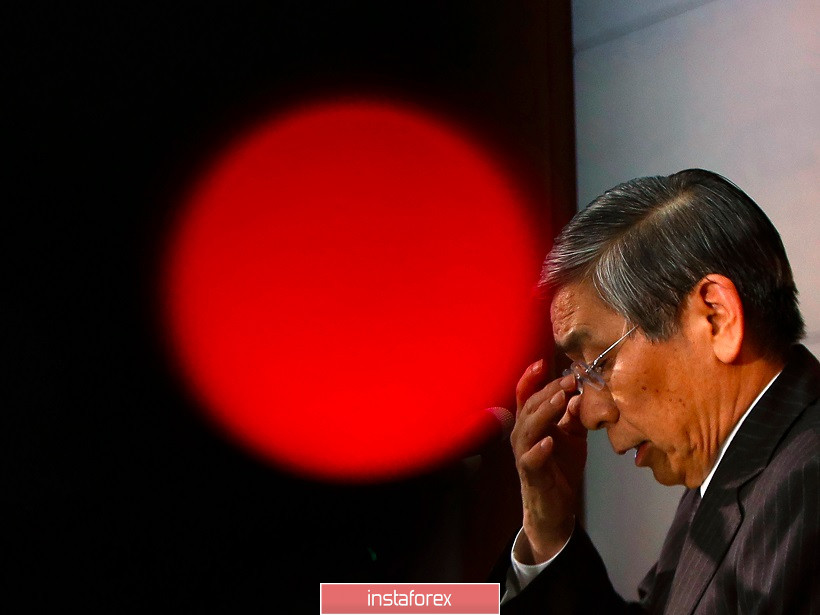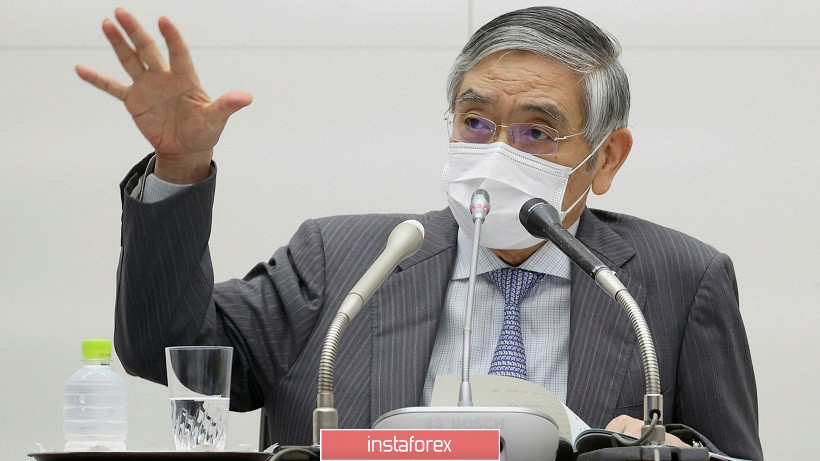The yen completely ignored the results of the Bank of Japan's next meeting. The subsequent comments by Haruhiko Kuroda aroused more lively interest among traders, but in general, the June meeting of the Japanese regulator went unnoticed. This is not surprising: the meeting was absolutely "passing", and Kuroda's rhetoric was familiar and predictable. As a result, the USD/JPY pair could not break out of the narrow-range flat, within which traders have been trading for the third day in a row. Even the "hot" events in Asia (the Sino-Indian conflict and the events on the Korean peninsula) were left without due attention - the yen showed only a formal reaction, "playing back" its status as a protective instrument. In the final trading session on Tuesday, the USD/JPY pair dropped to 107.21, but during the Asian session on Wednesday, the short-term downward impulse lost its strength, and the bulls took the initiative once again.

Let's start with the Bank of Japan, which maintained the status quo (the key rate is -0.1%, the target level on the yield of 10-year bonds is around 0%) yesterday, but at the same time, it voiced very pessimistic estimates regarding the prospects for the national economy. The Central Bank noted that export and production indicators as well as the level of consumption are sharply declining. The growth rate of capital expenditures has "slowed down significantly" and continues to slow down, while consumer price inflation is kept in the zero mark. According to forecasts, CPI inflation may go into the negative zone for some time in the future. In general, according to the Central Bank, the country's economy is in serious condition, and this condition is getting worse. Further prospects will depend on the rate of extinction of the effects of the pandemic, and, accordingly, the rate of extinction of the pandemic itself. The Japanese regulator spoke about the familiar phrase that the Central Bank "will not hesitate to take additional mitigation measures if necessary." The Bank of Japan also plans to increase the size of a special program to combat the effects of the virus from 75 trillion yen to 110 trillion.
Moreover, the head of the Japanese Central Bank, Kuroda, confirmed at a subsequent press conference that the regulator intends to continue aggressive purchases of JGB. According to him, if the government issues more bonds with very long maturities, the Central Bank will acquire them in order to maintain a low yield. However, he warned that an excessive decline in long-term bond yields could harm the economy.
Despite such a pessimistic tone of the accompanying statement, as well as Kuroda's "dovish" rhetoric, the yen, as a result of the June meeting, remained almost at the same level as before the meeting. The market was ready for such rhetoric, and the possible expansion of special programs to combat the effects of the virus was discussed over the previous two weeks. Contrary to the fears of some experts, the regulator did not discuss further interest rate cuts - in my opinion, only this factor could have a significant impact on the dynamics of USD/JPY while all the other arguments of the Central Bank did not become news for market participants.

All this suggests that the yen paired with the dollar in the near future will focus only on the UScurrency. The Bank of Japan was not able to provoke volatility, and the reaction to increased geopolitical tensions only minimally (and temporarily) strengthened the yen. Given this disposition, the flat movement of the USD/JPY pair looks quite logical, since the yen does not have its own arguments for growth or decline, and the dollar index cannot determine its motion vector. Thus, this pair will continue to trade within the 107th figure in the near future, starting from the borders of the flat range.
From a technical point of view, the pair on the four-hour chart is practically on the middle line of the Bollinger Bands indicator (which corresponds to 107.35), thereby demonstrating the uncertain positions of both bulls and bears. If buyers break through the level of 107.35, then we can consider buying to the upper line of the above indicator, which corresponds to the price of 107.70. On the other hand, it is not necessary to talk about larger-scale price movements, given the previous three-day flat. The support level is 107.00 (the lower line of the Bollinger Bands indicator on the same timeframe, coinciding with the Kijun-sen line). If the bears leave below this target, the upward scenario will lose its relevance. However, in my opinion, such a scenario seems unlikely, at least in the medium-term.





















